The gender balance of the civil service has improved markedly in recent years – but even as Antonia Romeo takes over as DIT permanent secretary, Alice Lilly and Gavin Freeguard say women are still underrepresented in senior roles.
While more senior civil servants than ever are women, the percentage of women declines as you move up through the grades. Worryingly, the number of women at the very top of departments has fallen over the last few years.
Even with Antonia Romeo’s appointment, only four women lead departments as permanent secretary...
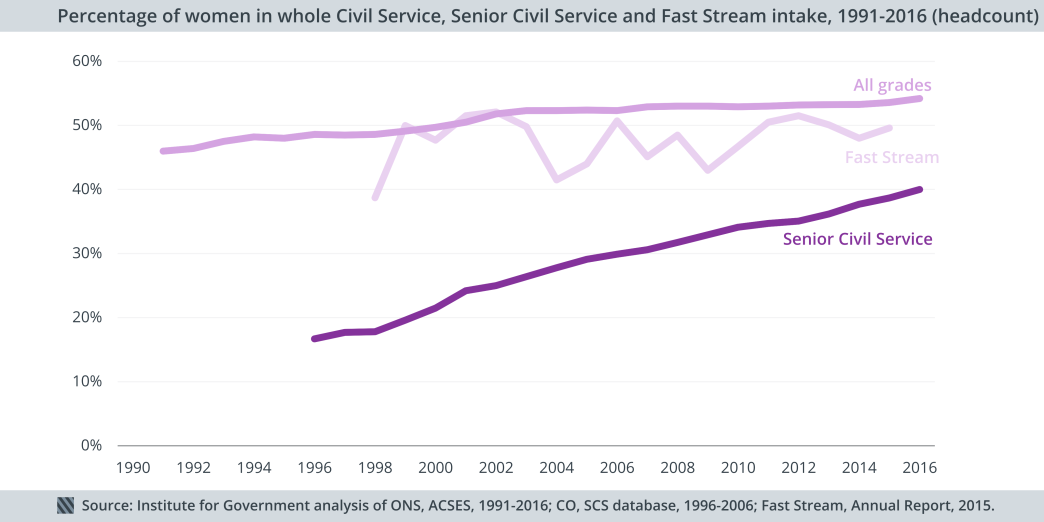
Antonia Romeo’s appointment at DIT means there will be four women in charge of departments; the others are Sue Owen (DCMS), Melanie Dawes (DCLG) and Clare Moriarty (Defra). This is the same number as in May 2010 and down from a peak of eight for half a week in March 2011.
The Cabinet Secretary, Sir Jeremy Heywood, has previously said (in response to the IfG’s post on the lack of female permanent secretaries) that he was "personally committed to making [a diverse civil service] a top priority". Recent changes – Philip Rutnam succeeding Mark Sedwill as Home Office Permanent Secretary, creating a vacancy at DfT – provide an opportunity to put these words into action.
...but the gap between the percentage of women in the whole Civil Service, and those at senior grades, is narrowing.
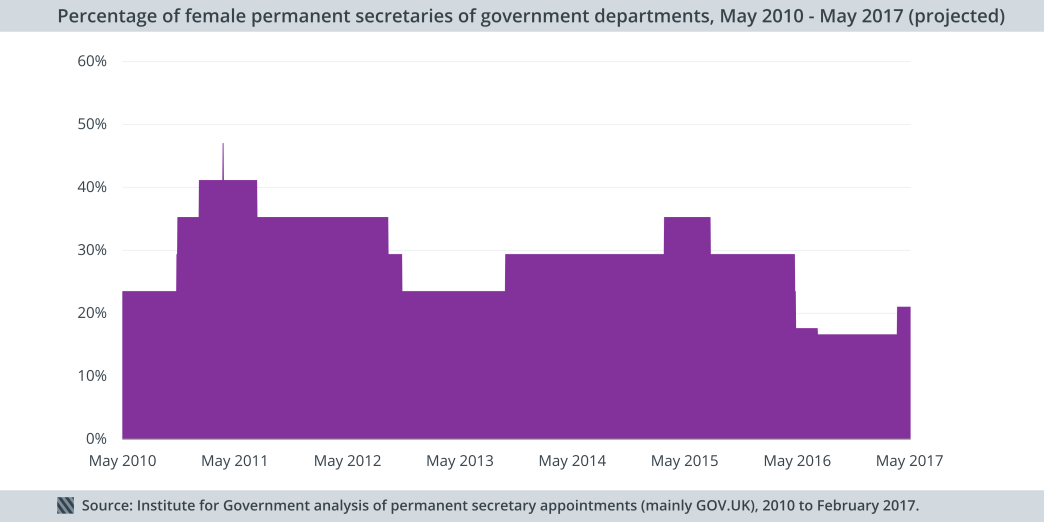
We’ve seen that, with 40% of senior civil servants now being women, there is the requisite pipeline of talent – but is this true of all departments?
DCMS has the highest percentage of women in its senior civil service, and FCO the lowest.
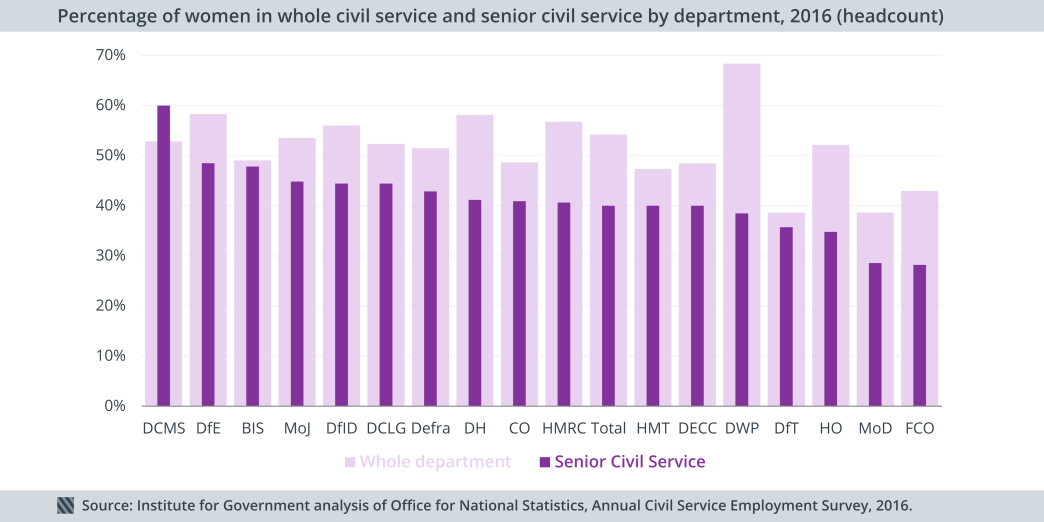
60% of senior civil servants in DCMS are female, the only department to top 50%.
At the other end of the scale are the FCO and MoD, where women make up just 28% and 29% of the SCS respectively. DWP has the largest gap between women across all grades and in the senior civil service – 30 percentage points (68% across the whole department, 38% of the SCS) – followed by Home Office (17.4 percentage points). The permanent secretaries of all four of these departments (all men) have increasing SCS diversity in their objectives.
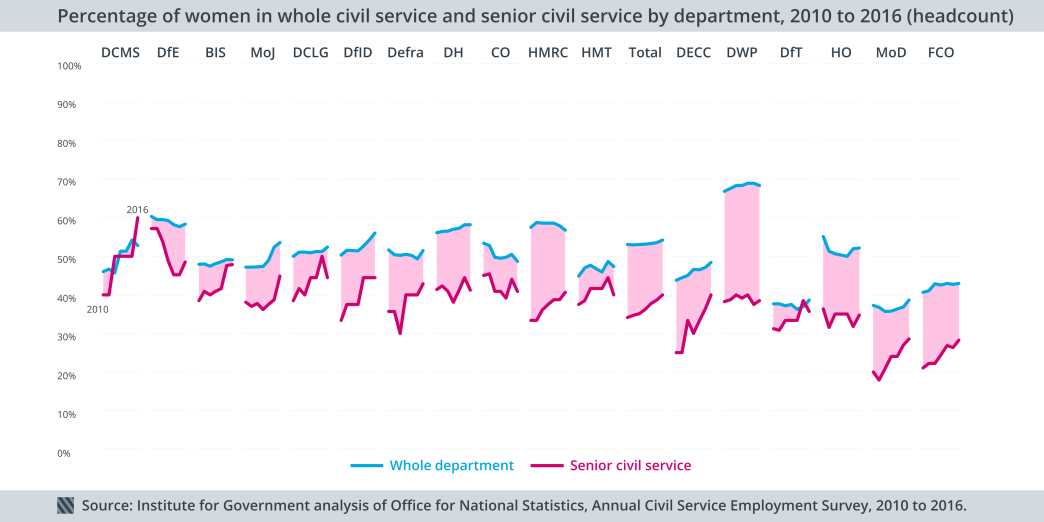
Most departments have seen the gap between women across the workforce and at SCS level, narrow since 2010. Both FCO and MoD are among those narrowing the gap through increases in the percentage of women in the SCS. DWP has not narrowed the gap, while the percentage of female senior civil servants in HO is lower than in 2010.
DCMS and DfT are the only departments where the percentage of women in the SCS has ever exceeded the percentage of women in the department as a whole.
Across the whole civil service, women outnumber men at the most junior grades, but are underrepresented in all of the more senior ones...
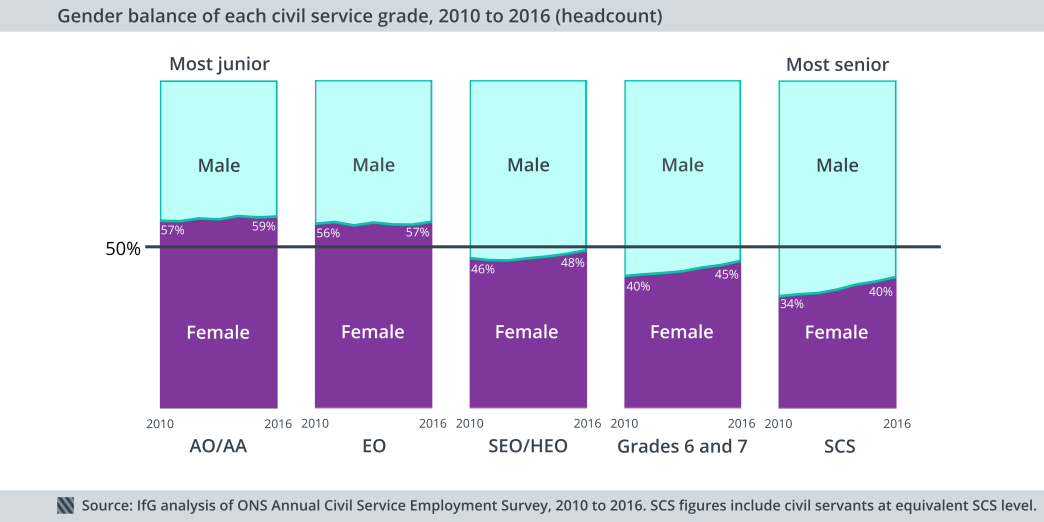
Women account for the majority of civil servants in the two most junior grades, Administrative Assistant/Administrative Officer (AA/AO, 59% in 2016) and Executive Officer (EO, 57%), but they are the minority in all of the more senior ones (48% at Senior Executive Officer/Higher Executive Officer level, 45% at Grades 6 and 7, 40% at SCS level).
The proportion of women at all grades has increased since 2010. Yet the fundamental pattern—that the higher up you go, the lower the proportion of women—remains.
…which is broadly true of most departments.
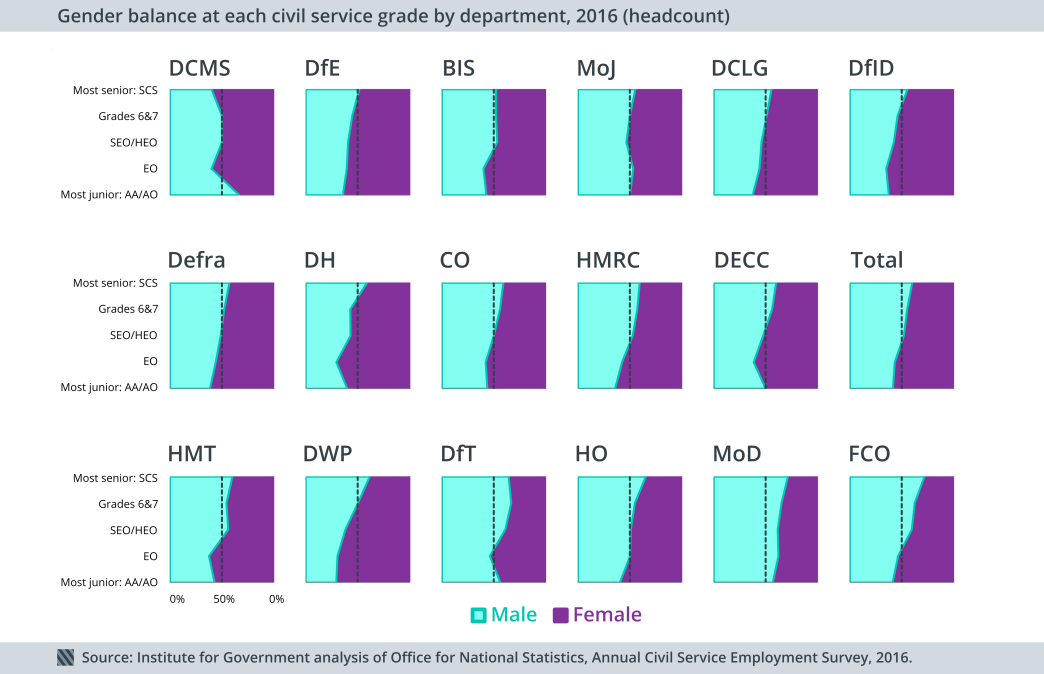
‘The civil service has a strong story to tell on gender equality’, wrote its Chief People Officer Rupert McNeil in June 2016. It does, thanks to various initiatives including the Talent Action Plan and appointment of diversity champions. But, as McNeil acknowledges, they ‘still have some way to go, especially at the very top’. Despite the welcome progress on gender balance, there are still areas – particularly at the most senior levels – which require attention.
- Supporting document
- Whitehall monitor 17.pdf (PDF, 2.17 MB)
- Topic
- Civil service